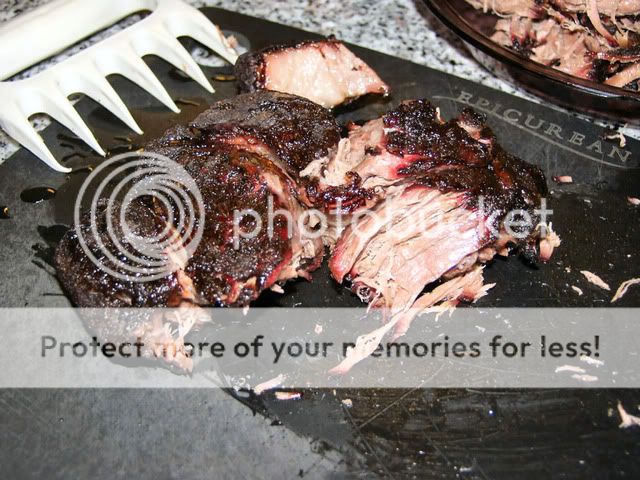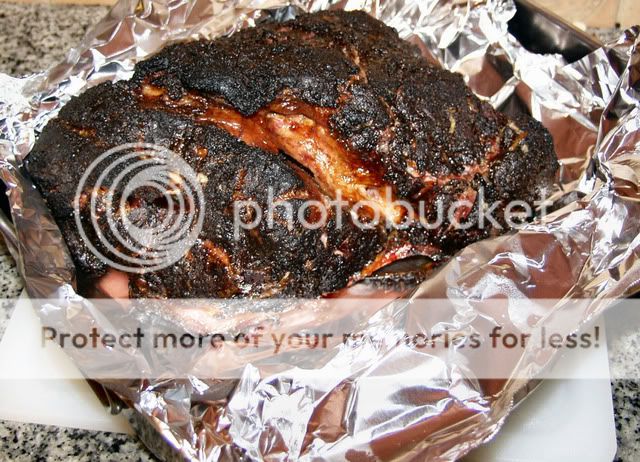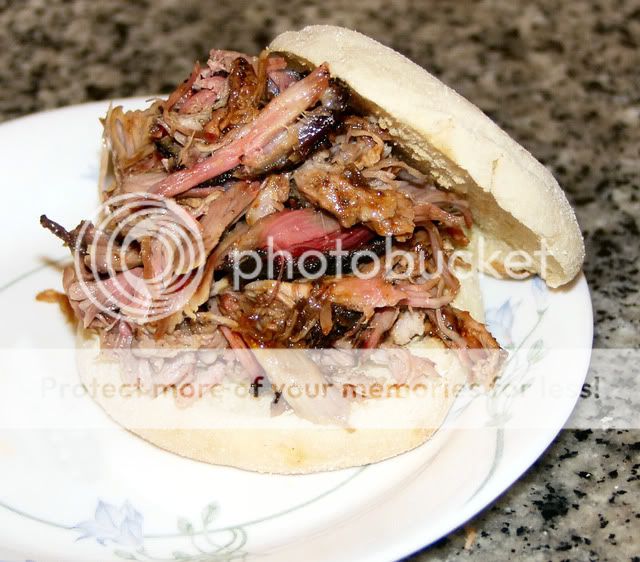My theory on the texture similarity of the meats is that there were two factors that affected the cook. One was that there were very high quality ribs, that I sought out for this particular cook. They were trimmed from the butcher, pastured local pork, heritage Berkshire hogs and cost me dearly. The other is that they cooked pretty fast, my record shows 225F and a rather unbelievable 4.5 hours on heat. The meat was cooked very evenly through, although the smoke left a ring, unlike many ribs that turn pink throughout. I think if I had done a longer cook the meat on the surface would be more like what you are describing.
My ideal pork shoulder would have a nice bark but a tender surface, this is probably contrary to what most folks think of bark. These ribs were, in part, an experiment to see how temperature in combination with surface treatment might have an effect on finished product. One of the things I really dislike in many rib and pork cook that I have eaten is the hard, dry, shards of pork, like eating planer shavings or mill shake. Bla!
I noticed that in your writeup, you noticed that many of the dried chile powder products, including paprika, lost their flavor other than heat. Obviously, since capsaicin is an oily compound, it is less likely to dissipate in cooking, but, I find it curious that the other flavors found in peppers would dissipate. Since these are more likely water soluble compounds, I wonder if there is some corollary between solubility in water and loss of intensity through the extended cooking time of BBQ.
I also am a strong believer in the importance of proper humidity in the cooking chamber, I don't believe this was emphasized before. I generally add two to three cans, essentially 30 ounces of water to any cook where I am not filling my kettle to capacity. When I smoke in the winter, I get better bark, especially during rain storms. I think this is because the added humidity discourages faster evaporation from the surface of the meat, giving the proteins more time to bind the rub into a bark which builds at the pellicle formed by the spices, herbs and proteins coming from the meat.




